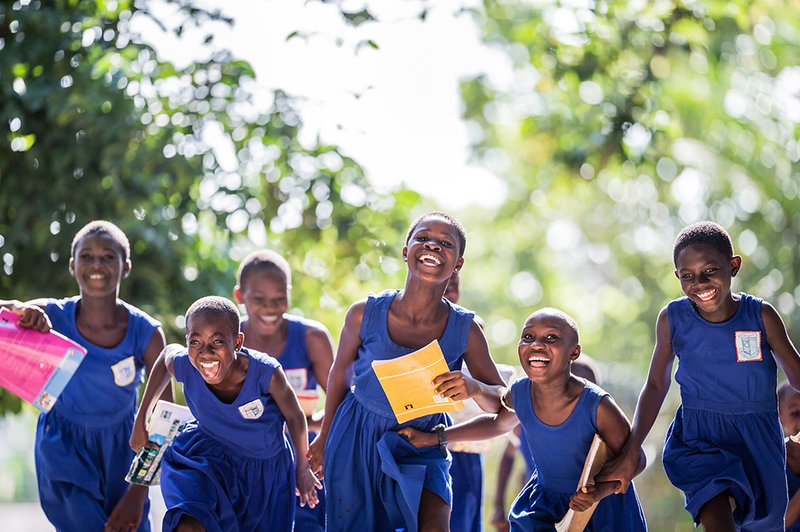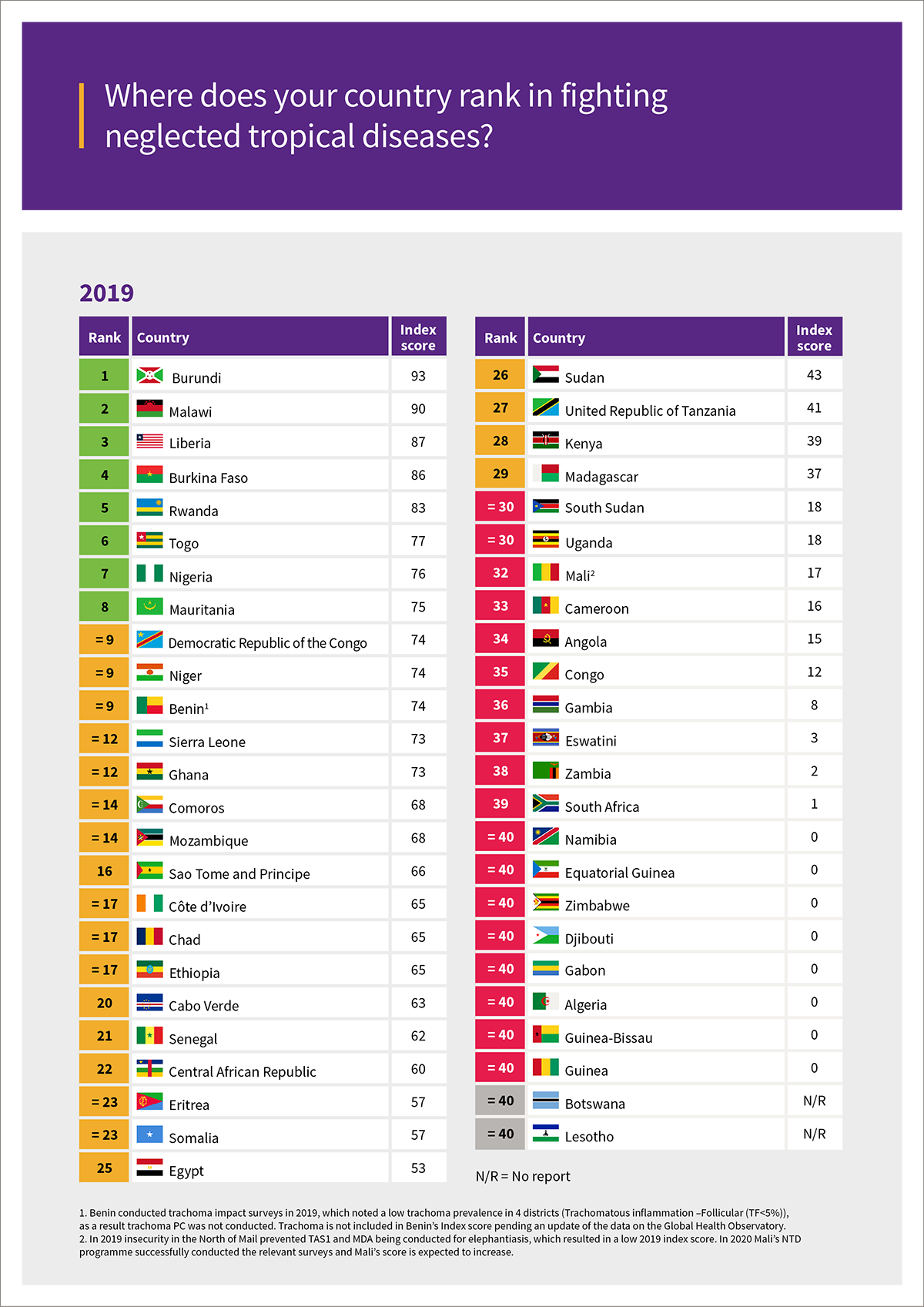
Sub-Saharan Africa countries with modest or low gross domestic products (GDPs) like Chad, Burkina Faso, and Burundi are outperforming wealthier nations in the fight against neglected tropical diseases (NTDs), according to the new African NTD league table.
In fact, five of the ten countries with the lowest NTD index score are in the top ten for gross domestic product per capita. Those five countries are: Botswana, Gabon, Equatorial Guinea, Namibia and South Africa.
But, overall is Africa making progress in the fight to beat NTDs?
The latest league table is positive: Compared to 2015, fewer people in Africa require treatment for at least one NTD. Simultaneously, the number of people receiving preventive treatments for at least one NTD is going up in Africa. Put simply: Based on the latest league table, Africa is making progress in the fight to beat NTDs.
In 2019 the top five countries are:
1 – Burundi (up from 33rd in 2018);
2 – Malawi (up from 31st in 2018);
3 – Liberia (up from 8th in 2018);
4 – Burkina Faso (down from 2nd in 2018); and
5 – Rwanda (up from 6th in 2018).
However, progress across Africa is not happening quickly enough to reach the Sustainable Development Goal target of a 90% reduction in the number of NTD cases by 2030. The latest NTD league table suggests that it is the wealthier countries in Africa that could help to speed progress up.
Thoko Pooley, Executive Director of Uniting to Combat NTDs, said: “Every year the NTD league table enables us to take a deep look at where we are seeing progress towards beating NTDs and where that progress has slowed. It is striking to see that when it comes to fighting neglected tropical diseases, wealthier nations are amongst the poorest performers. Hopefully this league table will spur countries with the means into action to change the lives of their poorest citizens by ending these diseases of poverty. There is simply no excuse.”

NTDs are one of the best buys in public health
Investing in neglected tropical diseases is not just the right thing to do, it is also a smart investment. According to a study by The World Bank Group, investing in NTD interventions helps countries to avoid out of pocket health expenditures and lost productivity, which has the potential to exceed costs of hundreds of millions of dollars. The net benefit for each individual affected by NTDs is US$25 for every one dollar invested by public and philanthropic funders – a 30% annualised rate of return.
Research has shown that interventions to end NTDs are affordable for the governments of most NTD-endemic countries, particularly because investments are often offset by generous drug donations. These interventions cost less than 0.1% of domestic health spending.
Consistency and COVID-19
It’s also important for countries to allocate consistent and sustained resources to treat people affected by NTDs and to avoid drugs expiring. 36% of countries surveyed by Expanded Special Project for Elimination of Neglected Tropical Diseases (ESPEN) in 2020 reported that drugs were either expiring or had expired in their countries. This data was presented during an African Union webinar on 22 September 2020.
The peak in the number of people receiving was in 2017 (when 70% of people who required treatment for at least one NTD in Africa received that treatment) and has not been repeated since. What’s more, it’s unlikely that this figure will be sustained in 2020 due to the disruptions caused by the COVID-19 pandemic.
Whilst it is likely that we will see disruptions in treatments across Africa due to COVID-19, many NTDs programs adapted quickly to respond to the pandemic. The Ascend project in Nigeria , for example, in a recent Thomson Reuters article, Chukwuma Anyaike, director of the NTD elimination programme at Nigeria’s ministry of health, said: “The COVID pandemic had a negative impact on NTD programming in Nigeria, but we were still able to make some deliverables and carry out interventions in the communities such as trachoma surgeries last year.
90% reduction in NTD cases by 2030?
And if the economic benefits for NTD-endemic countries investing in NTD interventions are not enough, benefits for public health are immense. Reaching the 2030 targets set out in the World Health Organization’s (WHO) road map will result in 600 million disability adjusted life years (DALYs) averted. To put this into perspective, that is roughly half of the world’s DALYs lost annually to cardiovascular disease and cancers. DALYs refer to the number of years lost to ill-health.
Following the launch of WHO’s latest road map and World NTD Day, there is a renewed focus on how countries will work to beat NTDs, which continue to affect over 1.7 billion people around the world. But, currently in sub Saharan Africa, the data shows that the wealthiest countries are at the bottom of the league when it comes to preventing and treating NTDs.
What is the NTD league table?
Every year, during the African Union, the heads of states of African nations review the progress that has been made in the fight against neglected tropical diseases (NTDs) as part of the African Leaders’ Malaria Alliance (ALMA) forum.
The data that the heads of state scrutinise shows whether African countries are delivering treatments for the five most common NTDs, which are those that are amenable to preventive chemotherapy treatment. Those NTDs are: bilharzia, intestinal worms, lymphatic filariasis, trachoma, and river blindness. Collectively, these five NTDs continue to affect 612 million people across Africa.
Based on that data, African countries are put into an index – or league table – which shows how well each country is doing in reaching its citizens with preventive treatment for those five NTDs. You can read about the latest league tables and a detailed analysis of the latest index here.